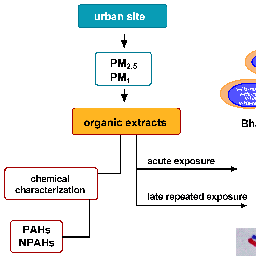Hazard assessment of air pollutants: The transforming ability of complex pollutant mixtures in the Bhas 42 cell model
Main Article Content
Abstract
The use of in vitro alternative methods is a promising approach to characterize the hazardous properties of environmental chemical mixtures, including urban airborne particulate matter (PM). The aim of this study was to examine seasonal differences in the toxic and transforming potential of PM samples by using the in vitro cell transformation assay in Bhas 42 cells for the prediction of potential carcinogenic effects. Bhas 42 cells are already initiated, and the v-Ha-ras transfection, together with genetic modification following the immortalization process, makes them a valuable model to study the late steps of cellular transformation leading to the acquisition of the malignant phenotype. Exposure to organic extracts of PM1 and PM2.5 induced dose-related effects. The transforming and cytotoxic properties were related to the amount of PM collected during the sampling campaign and associated with the concentrations of polycyclic aromatic hydrocarbons (PAHs) in the samples. All the samples induced cell transformation following prolonged exposure over 2 weeks. Our results support the utility of the in vitro top-down approach to characterize the toxicity of real mixtures, thereby supporting regulators in the decision-making process. The results also identify the need for appropriate assay selection within the in vitro testing strategy to address the complexity of adverse outcomes.
Article Details
Articles are distributed under the terms of the Creative Commons Attribution 4.0 International license (http://creativecommons.org/licenses/by/4.0/), which permits unrestricted use, distribution and reproduction in any medium, provided the original work is appropriately cited (CC-BY). Copyright on any article in ALTEX is retained by the author(s).


